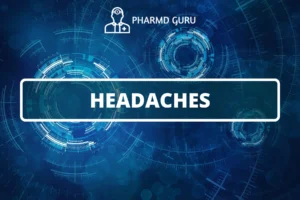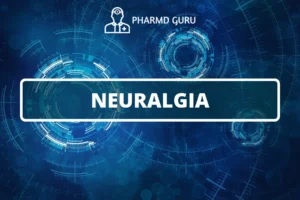Sleep disorders are a group of conditions that affect the quality, timing, and duration of sleep. They can significantly impact an individual’s overall well-being and daily functioning. In this article, we will explore the etiopathogenesis, or underlying causes and mechanisms, of sleep disorders and discuss the pharmacotherapy options used in their treatment.
SCROLL DOWN TO THE BOTTOM OF THIS PAGE FOR ACTUAL NOTES.
Table of Contents
- Introduction
- Understanding Sleep Disorders
- Types of Sleep Disorders
- Etiopathogenesis of Sleep Disorders
- Neurochemical and Neurotransmitter Imbalances
- Environmental Factors and Lifestyle
- Clinical Features and Diagnosis
- Treatment Options
- Pharmacotherapy for Sleep Disorders
- Non-Pharmacological Approaches
- Lifestyle Modifications
1. Introduction
Sleep disorders encompass a wide range of conditions that disrupt the normal sleep patterns and can lead to daytime sleepiness, fatigue, and impaired cognitive function. Understanding the etiopathogenesis of sleep disorders is crucial for accurate diagnosis, effective treatment, and improved sleep quality.
2. Understanding Sleep Disorders
Sleep disorders are characterized by disturbances in the sleep-wake cycle, which can affect the ability to fall asleep, stay asleep, or achieve restorative sleep. Common sleep disorders include insomnia, sleep apnea, narcolepsy, restless leg syndrome (RLS), and circadian rhythm disorders.
3. Types of Sleep Disorders
Sleep disorders can be categorized into different types:
- Insomnia: Insomnia is characterized by difficulty falling asleep, staying asleep, or experiencing non-restorative sleep, leading to daytime impairment.
- Sleep Apnea: Sleep apnea involves repeated pauses in breathing during sleep, resulting in disrupted sleep patterns and reduced oxygen levels.
- Narcolepsy: Narcolepsy is a neurological disorder that causes excessive daytime sleepiness, sudden loss of muscle tone (cataplexy), and hallucinations during sleep transitions.
- Restless Leg Syndrome (RLS): RLS is characterized by uncomfortable sensations in the legs, leading to an irresistible urge to move them, often disrupting sleep.
- Circadian Rhythm Disorders: Circadian rhythm disorders involve disruptions in the body’s internal clock, leading to difficulties in sleep timing and wakefulness.
4. Etiopathogenesis of Sleep Disorders
The etiopathogenesis of sleep disorders is multifactorial and can involve various factors:
5. Neurochemical and Neurotransmitter Imbalances
Imbalances in neurochemicals and neurotransmitters, such as serotonin, dopamine, and gamma-aminobutyric acid (GABA), can contribute to the development of sleep disorders. These substances play essential roles in regulating sleep-wake cycles, maintaining sleep continuity, and promoting restorative sleep.
6. Environmental Factors and Lifestyle
Environmental factors, such as excessive noise, light exposure, irregular sleep schedules, and shift work, can disrupt the natural sleep-wake cycle and contribute to sleep disturbances. Additionally, lifestyle factors, including caffeine and alcohol consumption, tobacco use, and poor sleep hygiene practices, can impact sleep quality and duration.
7. Clinical Features and Diagnosis
Diagnosing sleep disorders involves a comprehensive evaluation of symptoms, medical history, and sleep patterns. Healthcare professionals use standardized diagnostic criteria and may recommend sleep studies, such as polysomnography or actigraphy, to monitor and evaluate sleep architecture and patterns.
8. Treatment Options
The treatment of sleep disorders aims to improve sleep quality, alleviate symptoms, and enhance overall well-being. It often involves a combination of pharmacotherapy, non-pharmacological approaches, and lifestyle modifications tailored to the specific sleep disorder and individual needs.
9. Pharmacotherapy for Sleep Disorders
Pharmacotherapy plays a vital role in the management of sleep disorders. Medications used in the treatment of sleep disorders include:
- Hypnotics: Hypnotic medications, such as benzodiazepines (e.g., temazepam) and non-benzodiazepine receptor agonists (e.g., zolpidem, eszopiclone), promote sleep initiation and maintenance.
- Melatonin Agonists: Melatonin agonists, such as ramelteon and tasimelteon, mimic the effects of the hormone melatonin, which regulates sleep-wake cycles.
- Stimulants: In certain cases, stimulant medications like modafinil or armodafinil may be prescribed to manage excessive daytime sleepiness associated with conditions such as narcolepsy.
It is important to note that medication should be prescribed and monitored by a qualified healthcare professional, as each medication has its own benefits, side effects, and considerations.
10. Non-Pharmacological Approaches
Non-pharmacological approaches are often recommended in conjunction with pharmacotherapy or as standalone treatments. These include:
- Cognitive-Behavioral Therapy for Insomnia (CBT-I): CBT-I helps identify and modify negative thoughts and behaviors that contribute to insomnia, promoting healthy sleep habits and relaxation techniques.
- Continuous Positive Airway Pressure (CPAP) Therapy: CPAP therapy is the primary treatment for obstructive sleep apnea and involves wearing a mask over the nose or nose and mouth during sleep to deliver continuous air pressure, keeping the airways open.
- Light Therapy: Light therapy is used to regulate circadian rhythms and is particularly helpful for individuals with circadian rhythm disorders, such as shift work sleep disorder or jet lag.
11. Lifestyle Modifications
Implementing healthy sleep practices and lifestyle modifications can significantly improve sleep quality. These may include:
- Maintaining a Consistent Sleep Schedule: Going to bed and waking up at consistent times help regulate the body’s internal clock and promote a regular sleep-wake cycle.
- Creating a Sleep-Friendly Environment: Designing a comfortable, quiet, and dark sleep environment can enhance relaxation and minimize disturbances during sleep.
- Practicing Relaxation Techniques: Engaging in relaxation techniques, such as deep breathing exercises, meditation, and progressive muscle relaxation, can promote calmness and improve sleep quality.
- Avoiding Stimulants and Promoting Healthy Habits: Limiting caffeine and alcohol intake, avoiding heavy meals close to bedtime, and engaging in regular exercise can positively impact sleep quality.
ACTUAL NOTES:




